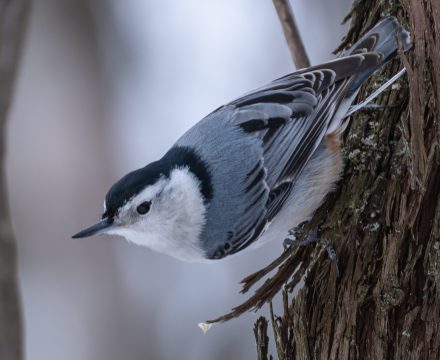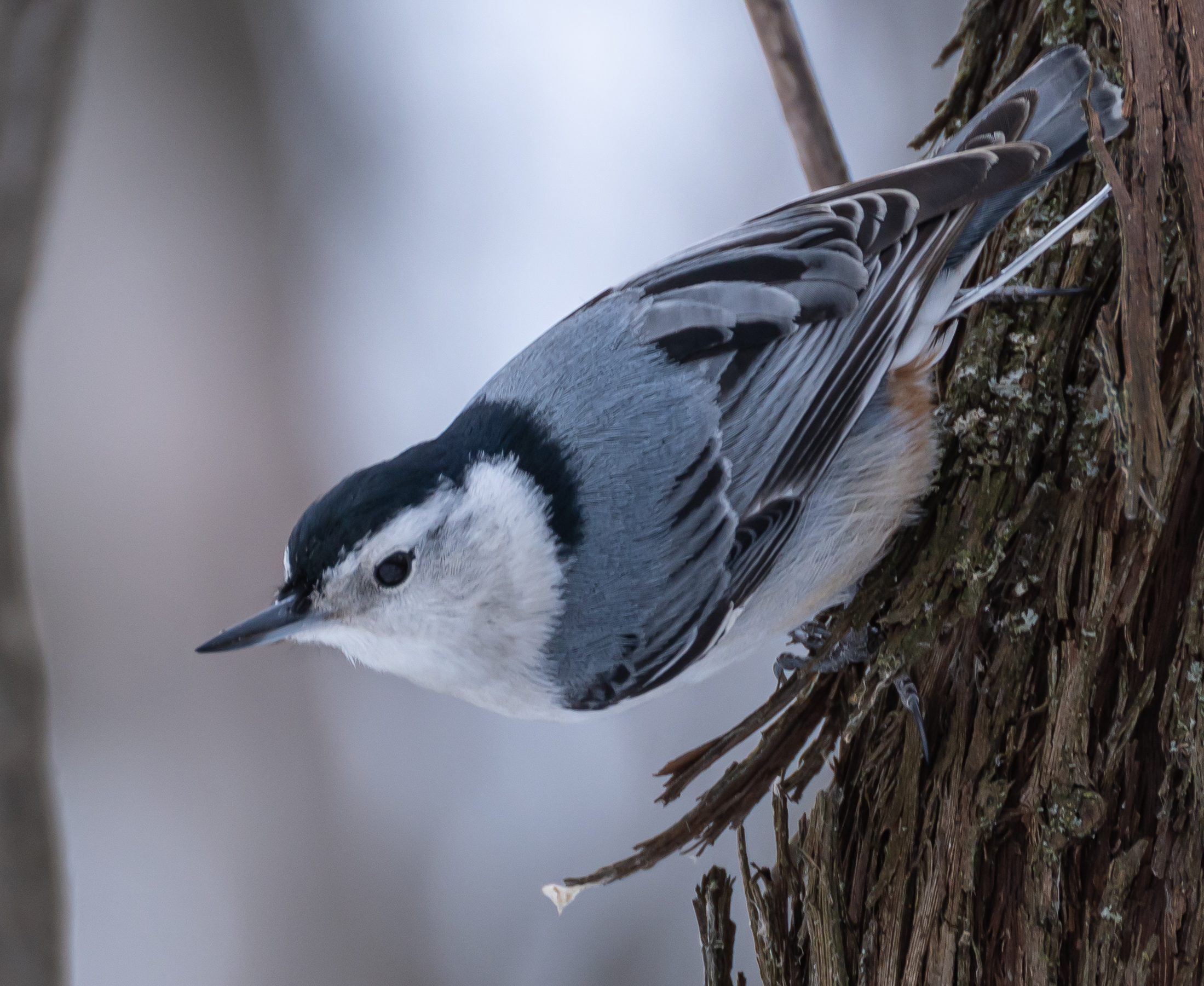Bird of the week: White-breasted Nuthatch
About: A small songbird with a white belly and gray back and wings. It feeds along the sides of trees, sometimes upside down.
Where to find this bird: Look for white-breasted nuthatches in larger trees, where they feed along trunks and large branches. Main Hall Green and the path behind Warch are some of the best places to find one on campus.
When to find this bird: Year-round.
Fun fact: White-breasted nuthatches often flock with other songbird flocks led by chickadees, which makes finding food easier and keeps them safer as they collectively look out for predators.

Seagulls in Wisconsin?
In the dead of winter, when most birds have migrated south, it might come as a surprise to see one of the birds associated with warm vacations at the beach foraging along the Fox River: seagulls. Well, they actually are not seagulls, but are herring gulls, one of about 50 species of gulls found around the world. When people ask me about seeing seagulls in Wisconsin, I have to break the news to them that seagulls don’t exist. That’s right — there is no such thing as a seagull; it’s just a colloquial term for gulls from the Laridae family, which also consists of skimmers and terns. The stereotypical white-and-gray herring gulls are quite common across North America and resemble multiple other gull species that look quite similar. Even though many people see gulls on their vacations to the beach, many gulls actually breed inland, along lakes and streams, and the gray gull breeds deep in the extreme desert of Northern Chile, where very little water is found.
Along the Fox River, we also get ring-billed gulls (not common in the winter), which are somewhat smaller and have a black ring around the end of their bill, as well as the significantly smaller Bonaparte’s gulls, which migrate through in spring and fall and have cute black hoods and red legs. More species do occur on occasion, but they are harder to pick out because gull identification can be complex with hybrids, immatures and some quite similar species. Gulls can take up to four years to mature, and there is often lots of variation in young birds. All of this makes gull identification hard, especially if you try to find rare gulls or are in an area with many different species of gulls (like the West Coast). This difficulty of identification spurs some birders to become gull experts, studying many different gulls for hours and coming to know the subtle differences between primary feathers on first- and second-year herring gulls.
Even though seagulls don’t really exist, birders will know what you mean. It also explains the long mystery of why seagulls won’t fly over the bay—they don’t want to become a baygull.

